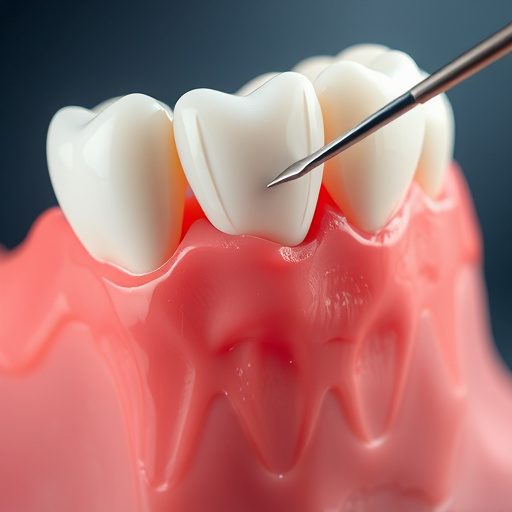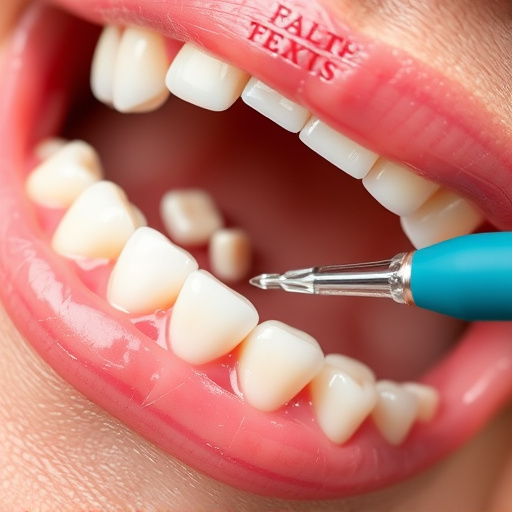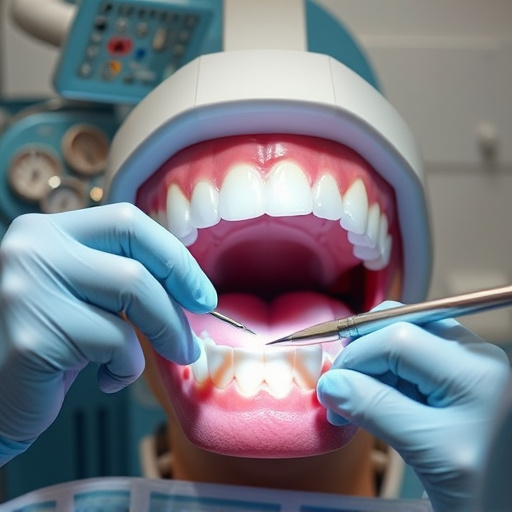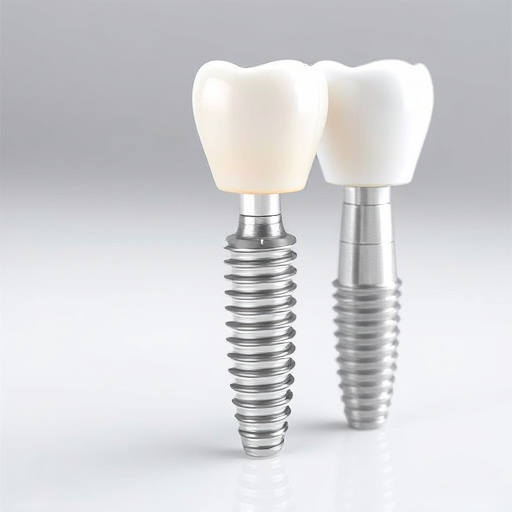Gum disease, caused by plaque and bacteria buildup, has symptoms like bleeding gums and bad breath. Treatment involves non-invasive procedures like scaling and root planing, which eliminate plaque below the gum line, restore health, and prevent further damage, potentially reversing the need for extractions or fillings. These methods, suitable for adults and children, promote long-term oral health when combined with proper hygiene and regular dental visits.
Scaling and root planing are effective non-surgical procedures for managing gum disease. This comprehensive guide explores gum disease causes, symptoms, and various treatment options, with a focus on scaling and root planing as a reliable solution. Learn how these deep cleaning techniques remove bacterial plaque and tartar below the gumline, promoting gum healing and preventing further damage. Discover why timely intervention through professional care is crucial for maintaining oral health and overall well-being.
- Understanding Gum Disease: Causes and Symptoms
- Non-Surgical Approaches for Treatment
- The Role of Scaling and Root Planing
Understanding Gum Disease: Causes and Symptoms

Gum disease is a common oral health issue affecting millions worldwide. It’s characterized by inflammation and infection in the gums, leading to potential tissue and bone damage if left untreated. Understanding its causes and symptoms is pivotal for effective gum disease treatment. The primary culprits behind this condition are dental plaque and bacteria, which can accumulate along the gum line due to poor oral hygiene, inadequate brushing, or flossing.
Symptoms may include bleeding gums during brushing or flossing, red, swollen, or tender gums, bad breath, and loose or mobile teeth. In some cases, it might even result in tooth extractions as a last resort if the disease has progressed significantly. Restorative dentistry plays a crucial role in gum disease treatment, offering procedures like scaling and root planing to remove plaque and tartar buildup below the gum line. These non-invasive methods help restore oral health, prevent further damage, and may even promote regrowth of bone and tissue around teeth, thus averting the need for dental fillings or extractions.
Non-Surgical Approaches for Treatment

When it comes to non-surgical approaches for gum disease treatment, there are several effective options available. These methods aim to restore health to the gums and prevent further damage without invasive procedures. One common technique is scaling, which involves the careful removal of plaque and tartar buildup from above and below the gumline using specialized instruments. This process helps eliminate the bacterial infections that cause gum disease and promotes healing.
In addition to scaling, root planing is another crucial non-surgical treatment. Root planing smooths the roots of teeth, removing any irritation or infection sources. Unlike surgical options, these procedures can be performed in a general dentistry setting during routine oral exams, making them more accessible and less intimidating for many patients. By adopting these gentle yet powerful techniques, dental professionals offer a comprehensive approach to gum disease treatment, focusing on long-term health and comfort.
The Role of Scaling and Root Planing

Scaling and root planning are essential procedures in the gum disease treatment process. These non-invasive techniques are designed to thoroughly clean and smooth the surfaces of teeth and dental roots, removing plaque, tartar, and bacteria that can cause or exacerbate gum inflammation and disease. By eliminating these irritants, the procedure promotes healing and re-establishment of healthy gums, which is crucial for maintaining oral health.
While often considered for adults, these treatments are also valuable in children’s dentistry to prevent or address early signs of gum disease. In some cases, dental implants or tooth extractions might become necessary as part of the overall gum disease treatment plan, especially if damage is severe. Proper oral hygiene and regular visits to your dentist can help maintain the benefits of scaling and root planning, ensuring long-term health for both teeth and gums.
Scaling and root planing are effective non-surgical approaches for managing gum disease. By removing plaque and tartar buildup below the gumline, these procedures help reduce inflammation and promote healthy gum tissue regeneration. As part of a comprehensive gum disease treatment plan, scaling and root planing can significantly improve oral health and prevent further complications. Remember that early detection and prompt action are key to successfully treating gum disease.














